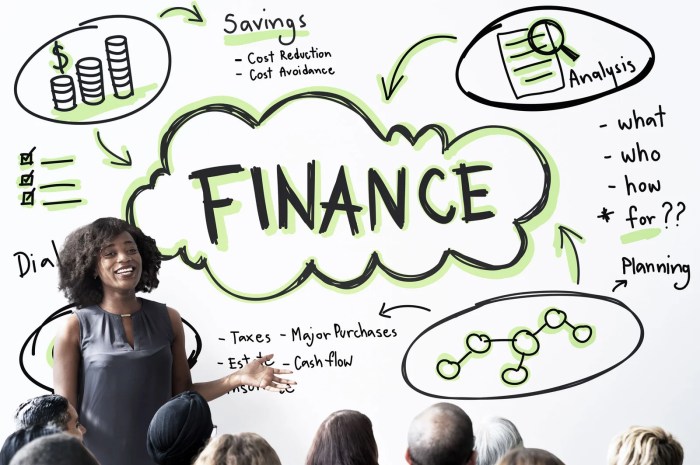Diving into the world of Financial literacy resources opens up a pathway to understanding and mastering your finances. From budgeting to investing, these resources are essential for navigating the complex landscape of personal finance.
As we explore the different components and types of resources available, you’ll discover how to improve your financial literacy and make informed decisions for a secure financial future.
Importance of Financial Literacy
Financial literacy is like the hidden key to unlocking a treasure chest of financial success. It’s all about understanding how money works and making informed decisions about your finances. So, why is financial literacy so crucial? Let’s break it down.
Empowering Personal Finance Decisions
- Being financially literate allows you to create a budget that works for you, helping you track your expenses and savings goals.
- Understanding concepts like interest rates and credit scores can help you make smart borrowing decisions and avoid debt traps.
- Knowing how to invest wisely can grow your wealth over time, securing your financial future.
Benefits in Today’s Society
Financial literacy is the key to financial freedom.
With the rise of complex financial products and services, being financially literate is more important than ever. It can protect you from scams, help you navigate the world of taxes, and make you a savvy consumer.
Key Components of Financial Literacy Resources
Financial literacy resources cover various essential topics to help individuals manage their finances effectively. One of the key components of financial literacy is budgeting, which plays a crucial role in financial planning and decision-making. Budgeting helps individuals track their income and expenses, prioritize spending, and work towards achieving their financial goals.
Budgeting
Budgeting is the process of creating a plan for how you will spend your money. It involves determining your income, setting financial goals, and allocating funds for different expenses such as housing, utilities, groceries, and entertainment. By creating a budget and sticking to it, individuals can better manage their finances, avoid overspending, and save money for the future.
Saving and Investing
Saving and investing are also important components of financial literacy education. Saving involves setting aside a portion of your income for future needs or emergencies. It helps individuals build financial security and achieve their long-term goals. Investing, on the other hand, involves putting money into assets such as stocks, bonds, or real estate with the expectation of generating a return. Understanding the basics of saving and investing can help individuals grow their wealth over time and secure their financial future.
Types of Financial Literacy Resources
Financial literacy resources come in various forms to cater to different learning styles and preferences. Let’s delve into the different types available to help individuals enhance their financial knowledge and skills.
Online Financial Literacy Courses vs. Traditional Classroom Settings
Online financial literacy courses offer flexibility and convenience, allowing learners to study at their own pace and from anywhere with an internet connection. On the other hand, traditional classroom settings provide face-to-face interaction with instructors and peers, fostering a collaborative learning environment. While online courses may be more cost-effective, some individuals may benefit more from the structured approach of traditional classrooms.
Availability of Free Financial Literacy Resources Online
There is a wealth of free financial literacy resources available online, ranging from educational websites to interactive tools and calculators. Platforms like Khan Academy, Investopedia, and NerdWallet offer a wide range of resources covering topics such as budgeting, investing, and retirement planning. These resources are accessible to anyone with an internet connection, making financial education more inclusive and accessible.
Financial Literacy Apps and Tools for Different Age Groups
For young learners, apps like Money Confident Kids and Bankaroo teach basic money management skills through fun and interactive games. Teens and young adults can benefit from apps like Mint and YNAB (You Need a Budget) to track expenses, set financial goals, and create budgets. Adults looking to improve their financial literacy can explore apps like Personal Capital and Acorns, which offer tools for investing, retirement planning, and wealth management. These apps cater to different age groups and financial goals, providing personalized solutions to enhance financial knowledge and decision-making.
Strategies for Improving Financial Literacy

To enhance financial literacy, individuals can take practical steps to improve their knowledge and skills in managing money effectively. It is crucial to start financial education at a young age and integrate it into school curriculums to ensure that individuals are equipped with the necessary tools to make informed financial decisions.
Importance of Starting Financial Education at a Young Age
Starting financial education at a young age lays the foundation for lifelong financial health. Children who learn about money management early on are more likely to develop good financial habits and make sound financial decisions as adults. It helps them understand the value of saving, budgeting, and investing, setting them up for future financial success.
Best Practices for Integrating Financial Literacy into School Curriculums
- Include financial literacy as part of the core curriculum: Schools can incorporate financial education into subjects like math, economics, and social studies to make it an integral part of the educational experience.
- Use interactive and real-life examples: Engaging students with hands-on activities, simulations, and real-world scenarios can help them apply financial concepts in practical situations.
- Collaborate with financial institutions and experts: Schools can partner with banks, financial advisors, and other professionals to provide students with valuable insights and resources on financial literacy.
- Offer workshops and seminars: Organizing workshops, seminars, and guest lectures on financial topics can supplement classroom learning and expose students to different aspects of money management.
- Encourage student involvement: Promoting student-led initiatives, such as financial literacy clubs or projects, can empower students to take ownership of their financial education and share their knowledge with peers.
